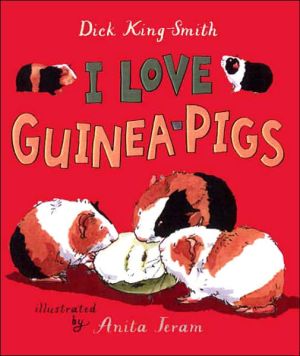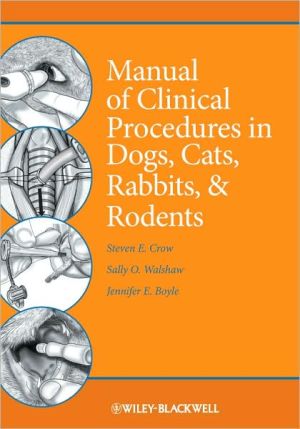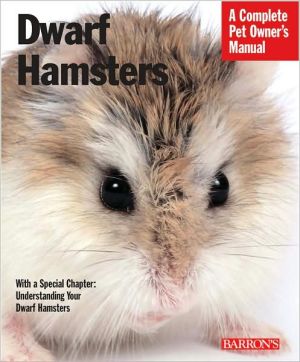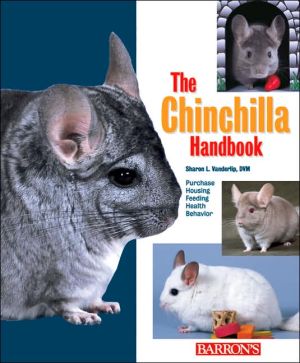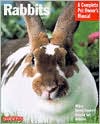Ferret Husbandry, Medicine and Surgery
Ferret Husbandry, Medicine and Surgery is a must-have for the small animal practitioner and those interested in ferrets in general. It aims to inform on all aspects and conditions relating to the domestic ferret. Edited and authored by one of the eminent authorities on ferrets in the world, John Lewington, for this new edition is joined by contributions - including both new text and illustrations - from ferret experts based in 8 different countries, including the UK, US, Australia, Japan and...
Search in google:
* Contributions from ferret experts around the world provide the most up-to-date information on this increasingly popular animal • Discusses differences in clinical practice throughout the world and provides practical tips and clinical scenarios for effective practice • An essential text for the small animal practitioner and ferret enthusiast alike Kent Davis As the title suggests, this is a general text on ferret husbandry, medicine, and surgery. It has one author, two contributors, three parts, and sixteen chapters. There are 289 pages. The purpose is to give general information on a broad spectrum of conditions relating to the domestic ferret. I feel the book has accomplished this goal. The intended audience is veterinary practitioners. The author is very knowledgeable and has achieved his intended goal of presenting various conditions in the ferret in an easy-to-read format. This general book presents a broad-spectrum of conditions relating to the domestic ferret. Color plates, diagrams, and illustrations are used to convey information. It is laid out in as easy to understand text without lengthy, useless information. The quality of this book is good and the color plates are especially useful. The table of contents is easy to use and directs readers to the appropriate subject. References are available for further, in-depth information. The general husbandry section is especially useful for new ferret owners.
PART 1: HUSBANDRY: Classification, history and current status of ferrets; External features and anatomy profile; Accommodation; Nutrition; Reproduction; Handling and medication; PART 2: MEDICINE: Viral, bacterial and mycotic diseases; Parasitic diseases of ferrets; Diseases of internal organs; Diseases of the ferret ear, eye and nose; General neoplasia; Endocrine diseases; PART 3: SURGERY: Anaesthesia and radiology; General surgery; Ferret vasectomy and orthopaedic surgery; Ferret emergency techniques
\ From The CriticsReviewer: Julia K Whittington, DVM(University of Illinois College of Veterinary Medicine)\ Description: This book covers the husbandry, medicine, surgery, and special anatomy of ferrets. Updated from the first edition in 2000, this is largely the work of the author, but it does contain contributions from several notable experts in the field of ferret medicine. Interspersed throughout the chapters are sidebars titled "Author's clinical example" or "clinical case," which help to underscore points in the text and give the material a conversational feel.\ Purpose: The author's stated purpose is to give veterinary practitioners a tool for providing care to ferrets and communicating with ferret owners. Additionally, the author hopes to increase the quality of care given to ferrets. These are noble ideals and the non-U.S. based viewpoint that permeates the book distinguishes this from other similar resources currently available. \ Audience: Practitioners who are working with ferrets in a small animal practice setting are the intended audience. Specifically, the author indicates that small animal veterinarians working with pet dogs and cats will find the book useful while caring for ferrets, "one of the three carnivores sharing the home of man." The author's credentials indicate that he has extensive experience with ferrets and a good understanding of associated husbandry, medicine, and surgery. It is obvious from the book, largely written by the author, that he has a passion for these creatures and is interested in advancing the field of ferret medicine.\ Features: Approximately one-third of the book is dedicated to husbandry issues. One notable addition to this section is an excellent discussion of ferret genetics which is largely omitted by most books. Although the book makes good use of images, the quality of some of the images is less than ideal. The many tables, schematics, and diagrams are excellent additions. Medicine and surgery are split into two sections, which is a little inefficient when covering a topic that fits in both, but the author cross-references these well. Some may feel that the unconventional conversational tone of the book diminishes it, but it does not distract from the content. The most notable problem with the book is the small font size.\ Assessment: This book was a pleasure to read and it offers refreshing exposure to a field of exotic animal practice dominated by a U.S. perspective. It is well written with an informal feel that may appeal to pet practitioners. The second edition has incorporated current information and would be a good addition to the clinic library.\ \ \ \ \ From the Publisher"John Lewington is a practitioner who wishes to share his knowledge and love of ferrets. In doing so he keeps the 'chatty' style of the first edition. This is important - in accomplishing his aims he has written a unique book. While he has 'imported' some new authors covering specific sections and whole chapters this is essentially a single author volume. \ This is the best ferret book on the market. The price represents excellent value (it is well illustrated) and, with ferrets becoming increasingly common pets, it will justify its position on the shelf of anyone seeing more than the occasional ferret. For those seeing ferrets regularly or specialising in exotic species, it is required reading.\ There have been major advacnes in ferret medicine since the first edition in 2000 and these have been covered in great depth.\ Recycle yur old edition and replace it with the second, settle back and enjoy learning!" - Reviewed by John Chitty, The Veterinary Record, August 11, 2007\ “I was certainly impressed with this book, with its broad range of content, colour pictures and it probably contains virtually anything that you could wish to know about ferrets. It is easy to read, as it is written in a fairly chatty style with boxes containing information on relevant clinical cases, but it still contains the sort of detailed information necessary for any veterinary surgeon treating ferrets.\ I would whole-heartedly recommend this book to any veterinary surgeon with more than a passing interest in ferrets, as well as recommending it to owners who want to be better informed on the care of their animals.”\ Reviewed by Owen Davies BVSc MRCVS (UK), for EJCAP, vol 17, October 2007\ —————————————————————————————————————————\ **Description**\ This book covers the husbandry, medicine, surgery, and special anatomy of ferrets. Updated from the first edition in 2000, this is largely the work of the author, but it does contain contributions from several notable experts in the field of ferret medicine. Interspersed throughout the chapters are sidebars titled "Author's clinical example" or "clinical case," which help to underscore points in the text and give the material a conversational feel.\ **Purpose**\ The author's stated purpose is to give veterinary practitioners a tool for providing care to ferrets and communicating with ferret owners. Additionally, the author hopes to increase the quality of care given to ferrets. These are noble ideals and the non-U.S. based viewpoint that permeates the book distinguishes this from other similar resources currently available.\ **Audience**\ Practitioners who are working with ferrets in a small animal practice setting are the intended audience. Specifically, the author indicates that small animal veterinarians working with pet dogs and cats will find the book useful while caring for ferrets, "one of the three carnivores sharing the home of man." The author's credentials indicate that he has extensive experience with ferrets and a good understanding of associated husbandry, medicine, and surgery. It is obvious from the book, largely written by the author, that he has a passion for these creatures and is interested in advancing the field of ferret medicine.\ **Features**\ Approximately one-third of the book is dedicated to husbandry issues. One notable addition to this section is an excellent discussion of ferret genetics which is largely omitted by most books. Although the book makes good use of images, the quality of some of the images is less than ideal. The many tables, schematics, and diagrams are excellent additions. Medicine and surgery are split into two sections, which is a little inefficient when covering a topic that fits in both, but the author cross-references these well. Some may feel that the unconventional conversational tone of the book diminishes it, but it does not distract from the content. The most notable problem with the book is the small font size.\ **Assessment**\ This book was a pleasure to read and it offers refreshing exposure to a field of exotic animal practice dominated by a U.S. perspective. It is well written with an informal feel that may appeal to pet practitioners. The second edition has incorporated current information and would be a good addition to the clinic library.\ Weighted Numerical Score: 78 - 3 Stars\ - reviewed by Julia K. Whittington, DVM(University of Illinois College of Veterinary Medicine), Doody Enterprises, Inc.\ \ \ \ Kent DavisAs the title suggests, this is a general text on ferret husbandry, medicine, and surgery. It has one author, two contributors, three parts, and sixteen chapters. There are 289 pages. The purpose is to give general information on a broad spectrum of conditions relating to the domestic ferret. I feel the book has accomplished this goal. The intended audience is veterinary practitioners. The author is very knowledgeable and has achieved his intended goal of presenting various conditions in the ferret in an easy-to-read format. This general book presents a broad-spectrum of conditions relating to the domestic ferret. Color plates, diagrams, and illustrations are used to convey information. It is laid out in as easy to understand text without lengthy, useless information. The quality of this book is good and the color plates are especially useful. The table of contents is easy to use and directs readers to the appropriate subject. References are available for further, in-depth information. The general husbandry section is especially useful for new ferret owners.\ \ \ \ \ BooknewsVeterinarian founder of the Western Australia Ferret and Ferreting Society, Lewington offers a broad reference for anyone who comes into contact personally or professionally with the animals, which are becoming increasingly popular as pets. He augments his own down-under experience with care, diseases and their treatment, nutrition, and breeding with that of specialists in the US and Europe. He includes a section on surgery, with contributions from others. Annotation c. Book News, Inc., Portland, OR (booknews.com)\ \

